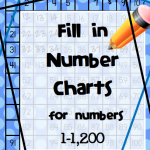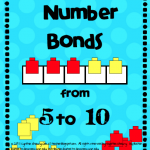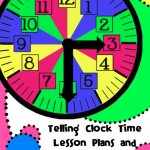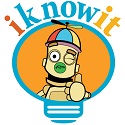Why Do We Do That? 3 Traditional Algorithms with Decimals
I went to one of the most beneficial decimal and fraction professional developments I have ever been to this summer. I want to share what I learned with you so you can share it with your children.
1. Traditionally adding and subtracting decimals: Just line up the decimals to add or subtract. Then just add and subtract like normal. You may have to add zeros to the end of the decimal number on top if you have additional numbers on the bottom. Why does this work?
Lining up the decimals is like adding like denominators. See:

2. Traditionally multiplying decimals: Multiply the numbers like there is no decimal point. Then count the places behind the decimal. The number of decimal places in the numbers you multiplied is the number of decimal places in the product when you count from the back of the number. Why does this work?
This works because you are counting the powers of ten in the denominator. That is why there are three places behind the decimal! See:

3. Traditionally dividing decimals: If their is a decimal in the divisor, move the decimal to the back of the number. Then move the decimal that many places back in the dividend number. Divide normally. Then place the decimal on top of the “house” above where the decimal is in the dividend. Why does this work?
Well, if you, again, turn the decimals into fractions, you can see what is happening. If you divide straight across the fractions, you get the resulting 25 tenths. Like with multiplication, this works the same. You count the zeros OR powers of ten to know how many decimal places to include in the quotient. See:

How You Can Make Cute & Cheap Rewards for Kids
This is how my idea all began. My mom had given me some adorable sticky notes in the shape of stars. She is always thinking of me buying me school items (thanks mom!). Also, I had bought this very cute patterned masking tape before school started at Office Depot on clearance. I wasn’t sure what I was going to do with it, but I knew it was cute. That was all that mattered!

I found myself wanting a way to attach something meaningful to the award certificates that students were getting for fluency in Reflex Math, and I ran out of Scotch tape. But, I had this cute tape, so my clearance deal found its purpose on students’ reward certificates! Next, I was trying to figure out a way to efficiently hand out cute pencils to students who scored 70% and up on the Reflex wall, but I had no certificate to attach it to since the certificates went on the wall. At first I was using square sticky notes to write children’s names on and attaching them to the pencil, but the pencils would get stuck to one another with the tape, and they didn’t look very attractive to say the least. So, what did I do?Finally, I wised up and used the star sticky notes and attached one piece of cute tape horizontally to the back to hold the pencil on. The star sticky note would have the child’s name and his percentage of fluency. Even though I used this idea for Reflex rewards, it could be done with anything. I think the pencils kind of look like little magic wands! This is so much better than the sticky Scotch tape mess I started with. Here is an example below (but I would have the student’s name on the star also).

Teacher Appreciation Sale!
There are several places you can find a great deal for Teacher Appreciation Week! One of these places is Teachers Pay Teachers of course. Everything will be on sale on the site. Some sellers have discounted their store additionally for a total 28% discount! My store happens to be one of the places you can find a 28% discount!

You can click here to link to my store.
Thank you to Lovin Lit, Zip-a-Dee-Doo-Dah, and Educlips for the wonderful clip art that helped me make this sale sign!
Highlights from Math Night
I wanted to share a few of my favorite things about Family Math Night. So here they are…
I saw this idea on Pinterest, admittedly, but I really wanted a LARGE 100 sign that parents and children had to walk through that had 100 on it. The wonderful art teacher helped me out tremendously by making a huge sign with 100 on it. She made the numbers separately because we obviously didn’t have paper large enough to write the whole 100 on. She made one of the 0’s a bit larger so that people could easily pass through it into the cafeteria and gym where our event was held.

We had a 100th day of school photo booth. One of our teachers had some already made up props with little lips, mustaches, and beards. Our kind art teacher helped me with the signage for the booth. Because we didn’t have the man power to take pictures and distribute them the same night, we just allowed parents or whoever to take pictures with their smart phones as they passed by.

After the fact, I wish I had put some colored paper behind the sign. That way there would have been a prettier background for short children!

The two girls in the picture above were some of the cutest dressed for the 100th day. One had on 100 hearts and the other had 100 kisses neatly done with lipstick!
Next, because Reflex Math is now on computer and iPad, we had a booth to showcase the ease of using this to learn math facts. Anytime we have technology set up, this tends to be a popular table.
This was my favorite game of the evening, the +10, -10, +1, -1 life sized 100’s chart game. Students stand on this and a large foamy die is rolled. Students stand on the numbers and move according to the number which the die lands on. If students bump into each other then the one who is bumped into is out.
The chart is made from duct tape and a large tarp. You can make cards on the computer for the chart, too, that will fit perfectly in the squares. However, we didn’t want children walking on these for the game with their shoes on, so index cards and packing tape were used to attach the cards for this game.

Finally, I LOVE, LOVE, LOVE this die which I found at Mardel (one of our educational stores). The dice has clear plastic pockets so you could change out whatever you wanted to put on the die. It could be used for literacy, for normal numbers, dots, math facts, you name it!!

Here is a game similar to this on TPT with a bubble gum theme, which kids absolutely love!



You may also like to read about past years’ math nights:

My Pi Day Shirt!
So I am wearing my Pi Day shirt at school! I really hadn’t thought of needing a Pi Day shirt and this sweet teacher made me one! Along with the shirt she gave me a sweet note. She knew testing weeks are stressful, so she thought of me. I am wearing it tomorrow to celebrate! Here is the sweet note she wrote me…

and the shirt (in my favorite color too!)…

Tomorrow, I am having this informational video for kids broadcast so at least the kids have some idea about Pi Day even at the elementary age…
Need a Smile During Testing?
Since I have been helping our school test coordinator all week, I felt a little humor was needed for the week with the heavy stress of it all. We have several new mothers at school so I borrowed a diaper and ta-da!!! I hung this on her wall. When she saw this, of course she laughed–my ultimate goal!!! 🙂

Giveaways and Flash Freebies!!!
To help celebrate a friend of mine’s birthday and 1,000 followers I am teaming up with her on her giveaways and flash freebies! Stop by her blog to register to win and wish her a HAPPY BIRTHDAY while you are there! Remember the times on her flash freebies are in Pacific Standard Time, and those start tomorrow (Sunday, March 8th).







Flash Freebies start tomorrow. Here is a sampling of those products…


Register to win here.
Freebie for TPT Sellers
I thought I would share something I made for myself a few weeks ago. If you are a TPT seller then you can use this, too! I put this in a clear view binder with my Teachers Pay Teachers notes. Pink is my favorite color, so this makes me happy when I look at it :)! Click here if you would like to have this binder cover too!

I hope you enjoy it :)!
Are You Taller Than a Third Grader?

With the combination of special programs and snow days, our time to teach all of the standards before our 3rd graders’ PARCC test is running out. With this in mind, I made a graph to help third grade out using the data from the whole 3rd grade with a fraction line plot. This type of graph and fractions are not as familiar to third graders because they haven’t been exposed to line plots in earlier grade levels. I put the graph in a central location where other grade levels could see it. That way other students could experience measurement and interpreting graphs as well.
I started out with an area by the water fountains for repeated exposure to student traffic.

Next I put up a strip of this amazing ruler like tape that I got at Office Depot when they had all of their special masking tape at back-to-school time. The tape counts every 12 inches. So in the picture below, I marked off every twelve inches with little triangles that mentioned that each 12 inches was 1 foot. Next, I marked off the fractions of an inch with stickers. I marked off the halves, thirds, and fourths so that students could easily see the relationship between the graph and the tape measure.
Then I had students come a few at a time and measure themselves to the closest fraction of a foot. Students recorded their X’s on sticky notes. The only reason I had them record their X’s on sticky notes is because this ensured having them all the same size. Line plots can make data look skewed if students don’t draw their X’s the same size. Plus on the PARCC assessment when students drag X’s on the line plot graph questions, students drag the X’s into little boxes which makes test question boxes resemble sticky notes. Students got to initial their X. Also, if students in the least bit chuckled about anyone else’s height because they were short, I immediately told them they wouldn’t even get to put an X on the graph. After I graphed most of the students from two classes, I only had two students who didn’t get to put their X on the graph because of this reason.
Here is the whole picture of everything with a more than willing model :)…































